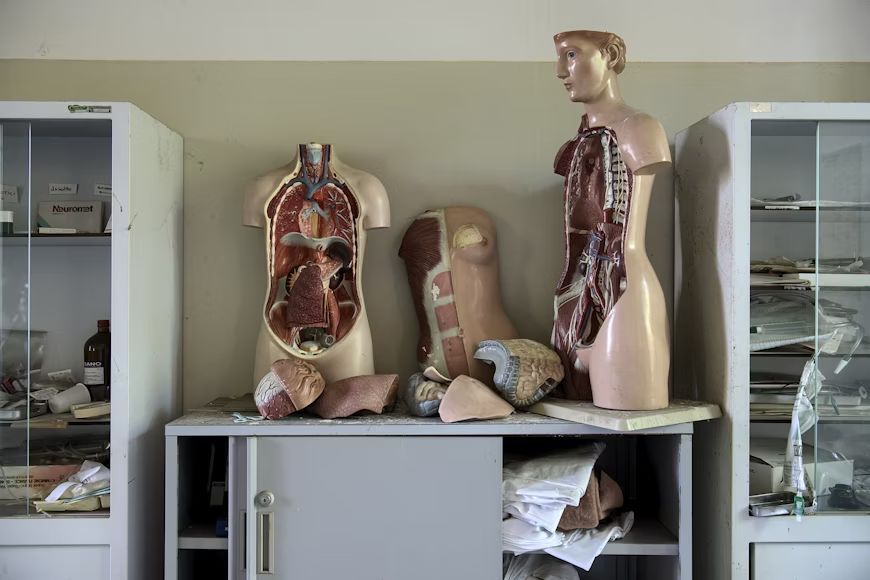Mind games
God’s paradox and other labyrinths of logic
Published on October 9, 2025
 Credit: 愚木混株 cdd20
Credit: 愚木混株 cdd20
Some ideas challenge what we think we know—paradoxes twist logic until reason bends or breaks. These classic thought experiments, from ancient puzzles to modern contradictions, expose gaps in philosophy, math, time, and perception. Here are 10 paradoxes that’ll warp your mind and leave you questioning reality.
The Barber Paradox
 Credit: Josh Sorenson
Credit: Josh Sorenson
If a barber shaves everyone who does not shave themselves, who shaves the barber? If he shaves himself, he must not; if he doesn’t, he must.
This self-referential paradox, posed by Bertrand Russell in 1918, demonstrates a fundamental problem in set theory. It inspired Russell's theory of types, which aimed to avoid such contradictions in formal logic and mathematics. Perhaps the barber will simply choose to grow a beard.
The Liar Paradox
 Credit: Joshua Hoehne
Credit: Joshua Hoehne
The statement "This sentence is false" cannot be true or false. If true, then it’s false; if false, then it’s true.
Known since ancient Greece as the Epimenides paradox, it underpins challenges in many logical systems. Although it seems simple at first, deeper thought reveals there is no resolution. Many have tried to solve or circumvent it, yet it remains unsolved.
The Ship of Theseus
 Credit: Zoltan Tasi
Credit: Zoltan Tasi
If you replace every part of a ship, is it still the same ship? What if you reassemble the old parts into a second ship?
This metaphysical problem dates back to Plutarch. It challenges identity and continuity, and has many analogs in biology (e.g., human cells constantly replacing themselves) and even AI (replicated minds in machines).
Zeno’s Achilles and the Tortoise
 Credit: Luca Ambrosi
Credit: Luca Ambrosi
Achilles and a tortoise race each other. As a courtesy, Achilles gives the tortoise a head start. However, Zeno argues Achilles can never catch it, because he must first reach where the tortoise was before, infinitely.
Although this paradox seems crazy and absurd—in real life, obviously Achilles would win the race—what Zeno is pointing to are the infinite gaps between finite numbers. The absurd argument, being that all motion is impossible due to infinite division, helps illustrate the limits of mathematical models of the world.
The Grandfather Paradox
 Credit: Gianluca Carenza
Credit: Gianluca Carenza
If you went back in time and killed your grandfather before your parent was born, how could you exist to do it in the first place?
This classic time travel paradox highlights the problems with causal loops. Theoretical physics offers some resolutions, such as branching timelines (as in the "many-worlds interpretation") or even stranger concepts like "closed time-like curves"—but its true resolution is still debated today.
The Unexpected Hanging Paradox
 Credit: Caryn Sandoval
Credit: Caryn Sandoval
The unexpected hanging paradox involves a judge sentencing a prisoner to be hanged on an unknown day of the following week, but the execution must be a surprise. The prisoner logically deduces he cannot be hanged on the last day, nor the day before, and so on, concluding he will not be hanged at all. The next week, to the prisoner’s surprise, the executioner knocks on the prisoner's door at noon on Wednesday.
The unexpected hanging paradox, also known as the surprise test paradox, concerns a person’s expectations about the timing of a future event they are told will occur unexpectedly. It poses a problem in epistemic logic—our knowledge about what we know—and has no widely accepted resolution.
The Bootstrap Paradox
 Credit: Max Muselmann
Credit: Max Muselmann
A time traveler brings a copy of Shakespeare’s Hamlet to the past before Shakespeare wrote it. Who actually authored it?
This paradox suggests that time travel allows the emergence of information or objects with no discernible origin. It is a common trope in science fiction and defies causality, sparking heated debates in temporal logic.
The Omnipotence Paradox
 Credit: Maximus Meadowcroft
Credit: Maximus Meadowcroft
Can an all-powerful being create a stone so heavy that it cannot lift it?
This simple question highlights one of the main paradoxes behind the concept of omnipotence. Some resolve it by limiting omnipotence to what is logically possible; others reframe omnipotence as maximal power rather than the ability to create contradictions.
The Sorites Paradox
 Credit: Sarah Doffman
Credit: Sarah Doffman
Removing one grain of sand doesn’t make a heap cease to be a heap. So, when does it stop being a heap?
This problem highlights the issue of vague definitions. At its core, it challenges not logic itself, but our use of language and the way we categorize concepts.
Hilbert’s Hotel
 Credit: Point3D Commercial Imaging Ltd.
Credit: Point3D Commercial Imaging Ltd.
A hotel with infinite rooms is full, but can still accommodate new guests by shifting each one to the next room.
This paradox, created by David Hilbert, illustrates the strange properties of infinite sets—whether rooms or any infinite collection of objects. It is used in set theory to demonstrate how infinities can behave in non-intuitive ways.












